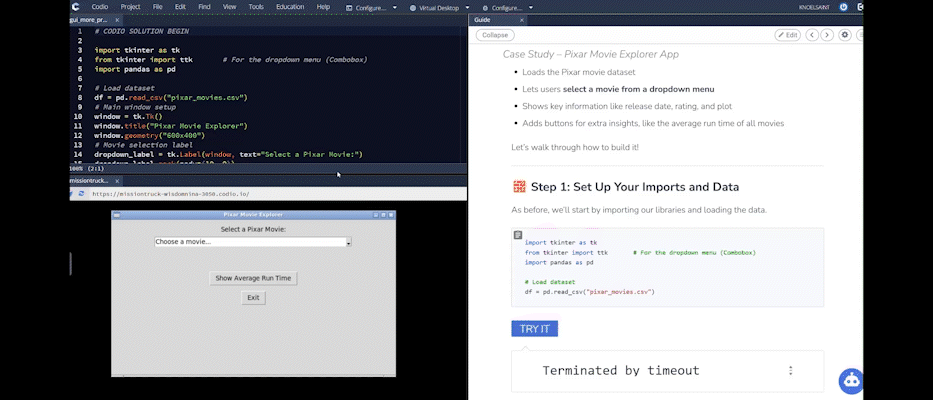
Hands-On, Insight-Driven Learning
From day one, learners are immersed in a practical journey of discovery. Through Python coding exercises, authentic datasets, and hands-on labs, learners acquire the skills necessary to become confident data-driven problem solvers. Every concept is grounded in application—from parsing JSON APIs to deploying dashboards with Streamlit and Tableau. Learners actively engage with industry-standard tools, including Jupyter Notebooks and Git, reflecting the collaborative and iterative workflows used by data professionals.
Challenge-Based Modules
This curriculum isn’t just about checking boxes—it’s about confronting real-world data challenges. Learners analyze incomplete and noisy datasets, detect and handle outliers, merge complex data sources, and visualize relationships across time, categories, and geography. They will practice web scraping and data mining, automate workflows, and tap into powerful APIs. As they advance, learners integrate AI-assisted tools to streamline data cleaning, automate pattern recognition, and generate synthetic datasets for sophisticated analyses.